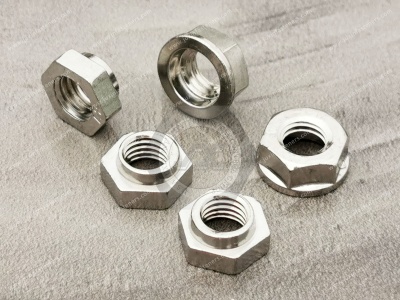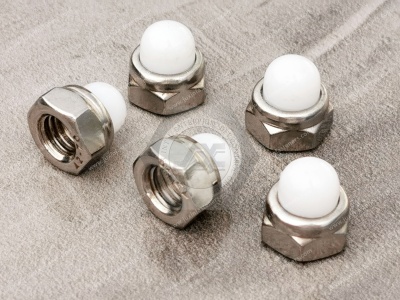Call Us
+86 136 6007 9809
Call Us
+86 136 6007 9809
Nov. 13, 2023
With industrial technology's continuous development and progress, stainless steel nuts have been widely used in modern industrial production. Stainless steel nuts are an indispensable part of mechanical connections, commonly used in aerospace, automotive, electronics, machinery, construction, and other fields. A stainless steel nut is a fastener with high strength, corrosion resistance, high-temperature, and low-temperature resistance. It is not easy to age, has no easy deformation, and has other characteristics. Stainless steel nut standards refer to developing technical standards for stainless steel nuts to ensure their quality and performance comply with national and industry standards.
Classification of stainless steel nuts:Stainless steel nuts can be categorized as follows according to their use and structure:
1. Hexagonal nut: A hexagonal nut is a standard nut with a hexagonal head that can be tightened with a wrench.
2. Square head nut: A square head nut is a kind of nut with a square head, which can be tightened like a hexagonal nut.
3. Conical Nut: A conical nut has a conical head that can connect parts with conical surfaces.
4. Cylindrical nut: A cylindrical nut is a kind of head for the cylindrical nut, and it can connect the cylindrical surfaces of the parts.
5. Flange nut: A flange nut is a kind of nut with a flange; it can connect the parts with a flange.
Technical requirements of stainless steel nuts:The technical requirements of stainless steel nuts include the following aspects:
1. Material: the material of stainless steel nuts should be by national standards and industry standards; generally speaking, the material of stainless steel nuts should have high strength, corrosion resistance, high-temperature resistance, low-temperature resistance, not easy to age, not easy to deformation and other characteristics.
2. Size: The size of the stainless steel nut should follow national and industry standards. In general, it should be precise, consistent, and meet the requirements.
3. Surface treatment: the surface treatment of stainless steel nuts should be by national standards and industry standards; in general, the surface treatment of stainless steel nuts should be flat and smooth, with no burrs, no cracks, no oxidation, and other defects.
4. Mechanical properties: the mechanical properties of stainless steel nuts should be in line with national standards and industry standards; generally, the tensile strength, yield strength, elongation, hardness, and other mechanical properties of stainless steel nuts should meet the requirements.
Inspection methods of stainless steel nuts:The inspection methods of stainless steel nuts include the following aspects:
1. Appearance inspection: the appearance inspection of stainless steel nuts should include checking the surface treatment, size, shape, defects, and other aspects.
2. Mechanical properties inspection: the mechanical properties inspection of stainless steel nuts should include a tensile test, yield test, extension test, hardness test, and other aspects.
3. Chemical composition test: the chemical composition test of stainless steel nuts should include checking the elemental content of the material, impurity content, and other aspects.


Stainless steel nuts application areas:
Stainless steel nuts have a wide range of applications and are mainly used in the following fields:
Stainless steel nuts are used primarily to connect fastening machine parts, and they are used in environmental protection equipment, medical equipment, communication equipment, electric power facilities, electronic products, instruments, food machinery, petrochemicals, ship assembly, pumps, valves, and pipelines, building curtain walls, open-air occasions, sports facilities, outdoor decoration, and other industries.
1. Aerospace: Steel steel nuts are widely used in the aerospace field to connect various parts.
2. Automotive: stainless steel nuts are widely used in automobile manufacturing for connecting various parts.
3. Mechanical: stainless steel nuts are widely used in mechanical manufacturing to connect various parts.
4. Construction: Stainless steel nuts are widely used to connect various steel structures.
5. Catering equipment: stainless steel nuts in the kitchen catering equipment connect the surface sheet metal and metal support structure.
6. Medical equipment: Stainless steel nuts connect sheet metal and metal support structures in medical equipment.
7. Communication equipment: Stainless steel nuts connect the sheet metal and metal support structure.
The future development trend of stainless steel nuts:The future development trend of stainless steel nuts mainly includes the following aspects:
1. Material: The future material of stainless steel nuts will become increasingly diversified, including not only high-strength stainless steel but also new materials.
2. Size: The future size of stainless steel nuts will become increasingly precise, and the size error will become increasingly small.
3. Surface treatment: the future surface treatment of stainless steel nuts will be more and more perfect, and the surface quality will be higher and higher.
4. Mechanical properties: The future mechanical properties of stainless steel nuts will be increasingly superior, and their tensile strength, yield strength, elongation, and other properties will be further improved.
In short, the stainless steel nut standard develops the technical standards of stainless steel nuts to ensure that their quality and performance align with national and industry standards. In the future, stainless steel nuts will become increasingly diversified, precise, perfect, and superior and constantly meet the needs of people in various fields for different types of stainless steel nuts. Please check the details.
https://www.juxinfasteners.com/metal-flange-lock-nuts-all-metal-prevailing/
Contact Us
Tel.:
+86 020 8621 0320
+86 020 3121 6067
Technical Support:
Navigation
SEND INQUIREY